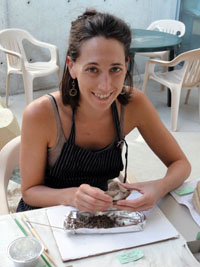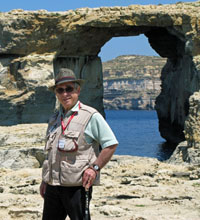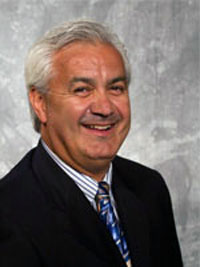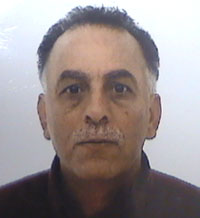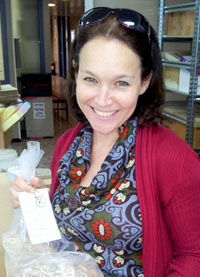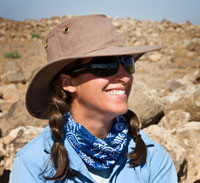
WHY I ATTEND THE ASOR ANNUAL MEETING
By Jennie Ebeling, Vice President (Membership), ASOR
This November 20-23, ASOR will hold its Annual Meeting in Baltimore, MD, close to my hometown. The Program Committee expects great attendance at this meeting, hopefully topping last year’s record-setting Annual Meeting held in Chicago with 90 academic sessions and over 920 registered attendees. The ASOR Annual Meeting is the yearly coming-together of ASOR’s vibrant academic community, and it attracts scholars and enthusiasts in archaeology, linguistics, geography, epigraphy, anthropology, and other fields related to the study of the ancient Near East. But why do individuals, including students, scholars, and laypersons, choose to attend the ASOR Annual Meeting?
For me, the ASOR Annual Meeting offered the first opportunity to hear archaeologists working in the Near East present the results of their excavation seasons while I was an undergraduate student. As a graduate student at the University of Arizona, I was given the opportunity to take part in Annual Meetings through the generous support of the Lindstrom Foundation and the Dorot Foundation. During those years, the Annual Meeting was the place to meet friends I’d made the previous summer in the field, keep current with my colleagues’ research, and learn about opportunities for the next summer and beyond. Although now I attend more business meetings than academic sessions, the ASOR Annual Meeting remains the single best forum for learning about current research in my areas of interest and the premiere networking event for Near Eastern archaeologists. It is one of two annual opportunities (the other is summer fieldwork) to spend time with people who “speak my language” and share interests that seem so foreign to those living in my small corner of Indiana.
Why do others attend the ASOR Annual Meeting? On behalf of ASOR’s Membership Committee, I wrote to some recent attendees to find out.
LeeAnn Barnes Gordon
Sherman Fairchild Fellow in Objects Conservation
Museum of Fine Arts, Boston
The ASOR meeting is one of my favorite professional conferences because there are thought-provoking presentations and an inviting atmosphere that encourages dialogue. As an archaeological conservator, I’ve found the meeting to provide high-quality programming that is relevant to my work, including sessions that are region-specific as well as topic-based, such as Cultural Heritage Management and Technology in Archaeology. I also co-chair a member-organized session with Suzanne Davis called Conservation and Site Preservation in the Near East that appeals to archaeologists and conservators alike. I would love to see the ASOR annual meeting become a regular place for conservators who work in the Near East and on Near Eastern materials come together to discuss present-day issues with archaeologists and other specialists. By attending this meeting, networking, and participating in sessions I hope to stay connected with colleagues and keep up with current research, as well as to raise the profile of conservation within the archaeological community.
Ram Kossowsky
Pittsburgh, PA
My interest in archaeology and history goes back a few decades. For the past twenty five years, I have traveled north and south, east and west; most of these tours were three to four weeks events led by a practicing archaeologist. As a native Israeli who is versed in Jewish history and culture, I sought archaeological information related to the ancient Near East. This included a number of extensive tours of the British Museum, Israel Museum and the Cairo Museum. Six years ago I participated in a comprehensive archaeological tour of Israel. That did it. I came home and bought all the books that I could handle that were published after 2000 – by Finkelstein, Dever, Mazar, Faust and others. The archaeology of the Near East is one of the most active scientific endeavors. I soon realized that waiting for books is counterproductive. As a retired scientist, I was familiar with the power of research-in-progress. Since I became the President of the Biblical Archaeology Society of Pittsburgh, the venue of the ASOR meeting is an essential source of information and of potential speakers for our annual lecture series.
Steve Ortiz
Associate Professor of Archaeology and Biblical Backgrounds
Southwestern Baptist Theological Seminary
I have been coming to the ASOR Annual Meeting for over twenty five years, first as a graduate student and now as a professor. As a student, the ASOR meeting was a great place to hear and meet the top scholars in the field as well as network with other students. It continues to serve that purpose. Now, as a co-director of a field project, it provides an outlet to report on our results from the field and get feedback from other scholars. It also helps as all of our staff members are ASOR members and we are able to have meetings to plan our research design and get updates on research face-to-face. As a professor, the ASOR Annual Meeting helps me to facilitate these same benefits for my students as I help them network with senior scholars and they get to meet other students who will be their future colleagues.
Hamed Salem
Associate Professor of Archaeology
Birzeit University
The ASOR Annual Meeting is the second largest conference, after ICAANE, that gathers scholars together working in the Near East. Every year, ASOR participants present reports of recent field work results, including new theories and methods. Although some sessions maintain a focus on traditional archaeology and biblical narratives, the increasing number of young, emerging scholars is noticeable each year and new ideas and technologies are always presented. For researchers living in isolation and buried behind teaching and other responsibilities, like myself, attending the ASOR meeting is an opportunity to refresh and be open to new discussions. It also allows me to share my own work and develop connections and relationships with colleagues from America and around the world.
Inbal Samet
Graduate Student
University of Haifa
I attended my first ASOR Annual Meeting nearly four years ago, fresh out of grad school. It was a first chance to present my MA thesis before such a wide, diverse audience, and to make the acquaintance of scholars that had until then been a last name and an initial on my reference lists. I have since participated in two more meetings to present intermediate conclusions from my ongoing Ph.D. research. With a dissertation examining the palatial economy of western Galilee Kabri, many of the sites relevant to my comparative study are located on the Lebanese coast. Regrettably, while Israel- and Lebanon-based archaeologists excavate sites that once shared a cultural horizon, today’s political barriers do not facilitate the desired interaction and discussion between them, let alone mutual work. The ASOR Annual Meeting is an academic venue where reciprocation is made possible.
Beyond this, the Annual Meeting is a unique opportunity for the entire cross-Atlantic Kabri expedition team to meet and discuss leisurely the upcoming season and to catch up. In our discipline, where academic and personal lives have no choice but to brush, and friendships are forged through summers of joint hard labor, these off-site reunions are of special importance.
Monique D. Vincent
Graduate Student
University of Chicago
(Photo credit: Friedbert Ninow)
I started attending ASOR’s Annual Meetings my second year in graduate school, interested in hearing firsthand the excavations results that eventually become the kind of evidence upon which complex theories of social life in the ancient world are built. I eagerly opened my ASOR program book after registering and sat down with a highlighter to note each talk of even remote relevance to my own studies of the past year. That first Annual Meeting was a blur of talks, in each of which I took copious notes, excited to follow up with some of the speakers later. I’ve returned to the Annual Meeting each year, anticipating the visit to new cities and continuing to absorb and engage with excavation reports and the progress of various research studies. I enjoy meeting so many other people involved in archaeology and Near Eastern studies and reconnecting with excavation teammates. ASOR’s meetings, for me, are a great way to stay linked with the people and research that are important to stimulating my own research, and provide a place where I can begin to contribute to the larger conversations in the field.
